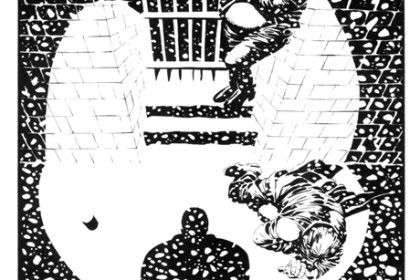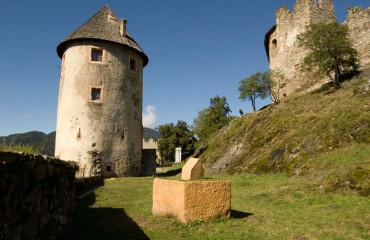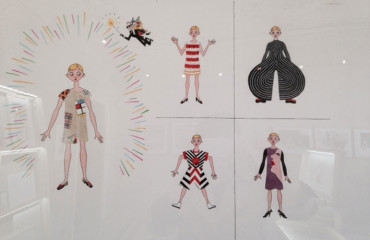
Grown up reading cosmic threats of superhero by Jack Kirby and Stan Lee, Frank Miller belongs to the generation of American authors who in the early eighties led the revolution that has completely changed direction and approach to the world of superheroes. The hard boiled declination of his Daredevil (May 1979-February 1983) before, and the noir introspection of The Dark Knight Returns (February-June 1986) later, are among the milestones that mark the transformation of the entire narrative genre due to the changed executive technique of design which enhances plasticity and dynamism, reworking of the direction of the page, use of the most advanced coloring, introduction into the world of superheroes of psychological aspects related to themes such as love and death.
All these elements mark the point of rupture with the past and open new perspectives in comic wisely dosing instances of film noir and pulp fiction. Its graphic and literary research has gradually moved away from superheroes engaging him for a decade in the conception and realization of Sin City, the most original comic book series of the nineties, made using the stark contrast of black and white resulting in a dazzling and violent light. In its simplest form appears as an editorial product niche, apparently an underground comic of hard-boiled genre which achieved – thanks to the revival of the film by Robert Rodriguez – the film general public, faithfully reproducing the result of that search of expression so unusual. Lines are thin, and are often limited to define the outline of elements affected by light, so as to trace the boundary of the occupied space of background environment.
The graphic style of Sin City responds to the stated intent to offer the reader not a realistic portrayal of the events narrated, but the conceptual and intimate view of the urban environment from which they originate, represented to reflect and emphasize the bleak loneliness of protagonists of borderline stories. The almost total absence of color is due to the desire to portray the state of human soul in its concreteness, thus making the message more raw and direct, mostly suggested by the yield minimalist environment. The tendency to synthesis leads Miller to operate an extreme selection of items drawn so as to make the space a place without form in which individual elements that appear are artificially lit in that eternal night that never fades into day. The narrative place becomes that indeterminate space, that place that has no limits, the city of sin.
Sin City is a non-place, an indeterminate fantasy city that at times evokes San Francisco or Las Vegas, close to the idea of a city like Los Angeles where it can snow even with incredible frequency and intensity, narrative device used to enrich the story with amazing graphics games born from the great technical mastery aimed at exalting sensational.
 English
English  Italiano
Italiano 



